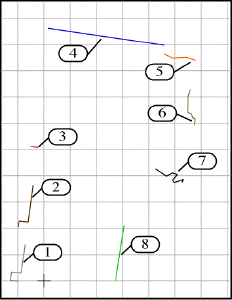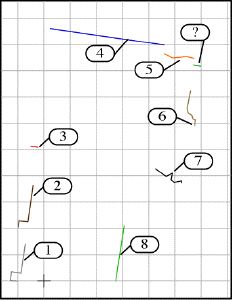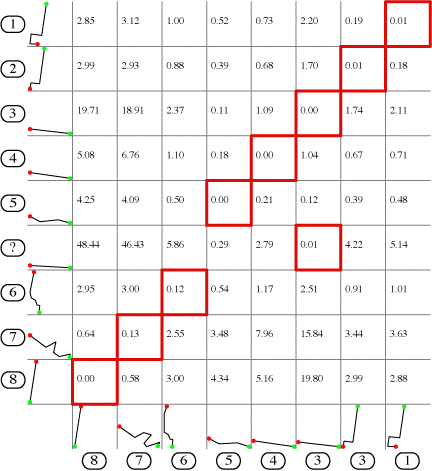
Shape matching constitutes out of two processes: First, polylines are transformed into a tangent-space representation and compared to each other to ontain a measure of similarity. Second, a correspondence of polylines is computed respected the cyclic order of objects in the scan.

A similarity measure for two polylines can be deduced from a correspondence of arcs. Therefore, the two polylines' arcs are matched against each other. The desired overall matching is said to constitute out of 1-to-1, 1-to-many, and many-to-1 corresondences of arcs. This allows to apply the technique of Dynamic Programming to compute the best correspondence of arcs. The computation makes use of a basic similarity measure of two arcs, which is is given as a difference function in tangent space.
 Polylines in scan #1 |
 Polylines in scan #2 |

|
|
| Table of individual similarities, highest similarities highlighted (Higher numbers denote higher dissimilarity). | |
Coming back to the example presented above, the best correspondence of the polyline marked ? and the one marked 3, would inhibit any matching of polylines 5 against 5, 4 against 4, ..., and 1 against 1. In the process of determining an admissible matching of polylines, the—tentative—correspondence between polyline ? and 3 is weighted against the correspondences it inhibits. So, it can be concluded here that is best to not match polyline ? at all, which is the correct decision.